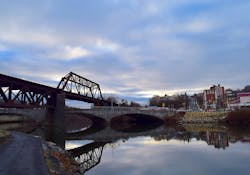Delaware Town Plans to Sink Treated Wastewater
In the town of Middletown, Del., there is a need to dispose treated wastewater generated by the population increase. According to Delaware Online, about 100 million gal of treated wastewater created by the 35,019 Middletown residents and large water users in Middletown’s industrial areas is annually sent to two area farmers. The treated wastewater is being sprayed on the crops that are not utilized for human consumption.
The water is also used in other areas of the town. 360 million gal is piped from the wastewater facility to hundreds of acres of land near town-owned Charles E. Price Memorial Park. There, it is used to be sprayed on the field through irrigation rigs. The water is also being used for irrigation at St. Anne’s Golf Course and at the Level Road sports complex.
Middletown has been experiencing the largest growth of any area in Delaware and is not slowing down anytime soon. Town of Middletown officials knew the volume of treated wastewater would soon become too much for the system.
With this information in account, Middletown has begun building an economical disposal system on 170 acres of Ford Farm.
Middletown officials have decided to building nine rapid infiltration basins that will take care of immediate future wastewater disposal needs. Officials will be using information from a University of Delaware study commissioned over a year ago.
A single basin will be able to dispose 275,000 gal of treated wastewater every week. The water used will be paper from the wastewater facility to a farm near Level Roads.
“A rapid infiltration basin is a way of disposing of wastewater with a very small footprint,” said Wayne Kersey, Middletown’s director of public works. “Without the ability to do that, the town would have to purchase large plots of land to spray on.”
Total cost of the project is about $2.5 million. This includes a $2.2 million nitrogen removal system that brings nitrogen levels down to DNREC-accepted levels.
“We have the treatment capability at the plant to hand a firm that would use 200,000 to 300,000 gal of water,” Kersey said. “But disposal is what our biggest need is. This will allow us to have that capacity without buying more land.”
